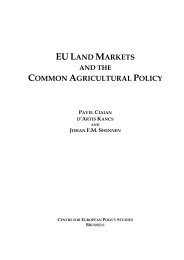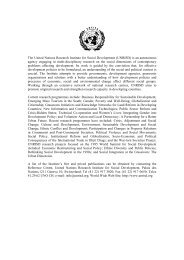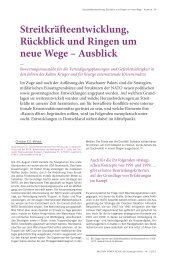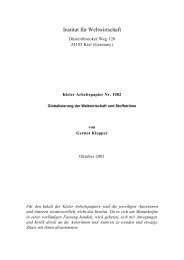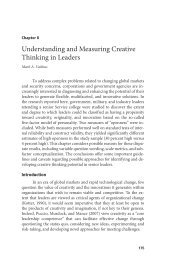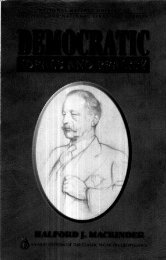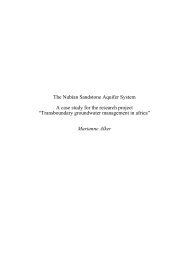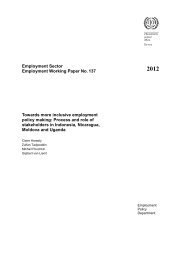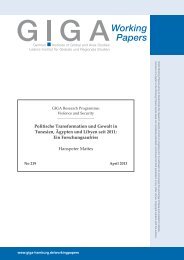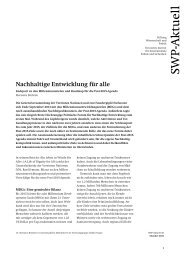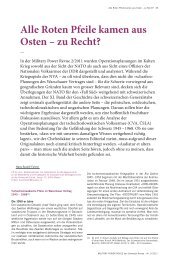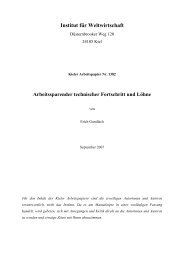Crime and Ammunition Procurement
Crime and Ammunition Procurement
Crime and Ammunition Procurement
Create successful ePaper yourself
Turn your PDF publications into a flip-book with our unique Google optimized e-Paper software.
JUCERJA Junta Comercial do Estado do Rio de Janeiro (Trade Board<br />
of the State of Rio de Janeiro)<br />
PRB Poudres Réunies de Belgique<br />
Secex Secretaria de Comércio Exterior (Brazilian Secretariat of<br />
Foreign Trade)<br />
SINARM Sistema Nacional de Armas<br />
SPL Special<br />
S&W Smith <strong>and</strong> Wesson<br />
Comtrade Commodity trade (UN statistics database)<br />
Endnotes<br />
1 Such offences could be called ‘market-based’ offences.<br />
2 The term ‘territorial centrality’ refers in this context to the degree to which the monopoly on<br />
the use of legitimate armed force is exercised by the government of a state over its territory<br />
as well as the physical <strong>and</strong> functioning presence of accepted <strong>and</strong> legitimate national institutions<br />
that are not challenged by non-state groups.<br />
3 The term ‘state’ is used in this chapter as a synonym of ‘country’ or ‘nation state’, that is, a<br />
recognized sovereign socio-political entity formed by a permanent territory, a defi ned population,<br />
<strong>and</strong> functioning government institutions.<br />
4 Weak <strong>and</strong> strong state types are not static polar opposites. States can move along a continuum<br />
depending on variations in the levels of their socio-political cohesion, socio-economic development,<br />
territorial centrality, <strong>and</strong> political capacity. It is certainly possible to argue that in the<br />
late 1920s <strong>and</strong> early 1930s the United States was a weaker state than it is today, with widespread<br />
political <strong>and</strong> police corruption, economic depression, <strong>and</strong> strong social inequalities.<br />
Strong criminal organizations with territorial control over cities such as Chicago were a<br />
symptom of this weakness. The same could be argued about Italy <strong>and</strong> organized crime in<br />
the south of the country, particularly in Sicily. The process of containment of the Italian<br />
mafi a was part of a parallel process of the consolidation <strong>and</strong> reform of Italian political <strong>and</strong><br />
judicial institutions. For a discussion of the concept of ‘weak states’ in the context of an<br />
analysis of transnational organized criminal activity see Dreyfus, 2002; Lyman <strong>and</strong> Potter,<br />
1997; <strong>and</strong> Stefanini, 2005.<br />
5 In this chapter the term ammunition refers to cartridge-based ammunition up to 12.7 mm<br />
(.50) calibre as well as h<strong>and</strong> grenades. These are the types of ammunition commonly used<br />
by criminals <strong>and</strong> especially criminal organizations in Brazil.<br />
6 The author is grateful to Delegate Carlos Antônio Luiz de Oliveira, Chief of the Rio de Janeiro<br />
civilian police DRAE, for the concept of ‘internal <strong>and</strong> external fl ows’.<br />
7 This is particularly, although not exclusively, the case for military <strong>and</strong> law enforcement calibres<br />
such as 7.62 x 39 mm, 7.62 x 51 mm, 5.56 x 45 mm, 9 mm, .45 <strong>and</strong> .40, .30, <strong>and</strong> .50 AE.<br />
8 A Brazilian Ministry of Health study reports that there were 39,325 fi rearm-related deaths<br />
in 2003 <strong>and</strong> 36,091 in 2004 (Ministério da Saúde, 2005, p. 3).<br />
196 Targeting <strong>Ammunition</strong>



